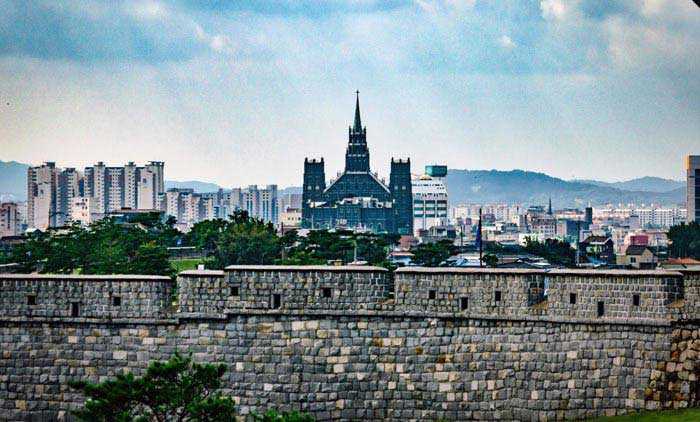When you visit South Korea, there are certain sites, activities and events you can't miss. Whether you are into admiring Korean palace architecture, relaxing by the beach or hiking stunning trails, South Korea will capture your senses. Dotted with an interesting history, the country's interesting past is reflected on its palaces and fortresses. By visiting these historical sites, you can step back in time to the Jeseon Dynasty, which was very powerful and lasted many centuries (1392-1910). The dynasty's legacy is alive in its palaces and fortresses, and it can complies with the principles of Korean architecture and Far Eastern standards.
Changdeokgung
Built in the early 15th century during the Joseon Dynasty, Changdeokgung Palace is an outstanding example of Far Easter palace architecture and design, as the complex blends harmoniously with the natural environment. King Taejong set up a Bureau of Palace Construction to create the complex - a group of official and residential buildings set in a garden which was brilliantly adapted to the uneven topography of the 58-ha site.
Although the complex was originally built as a secondary palace to the main palace of Gyongbokgung, Changeokgung served as the main seat of the dynasty for 250 years after the Japanese invasion in the late 16th century. The reason behind this change was while both palaces were burnt down during the invasion, it was Changdeokgung the one that was reconstructed first. Thanks to this change, the complex heavily influenced the development of Korean architecture, garden and landscape planning, and related arts, for many centuries.
UNESCO listed Changdeokgung Palace as a World Heritage site back in 1997 for its palace architecture, which includes all the key components of Korean palace architecture and complies with all the Confucian principles and protocols in its spatial layout, arrangement of buildings, gardens and forested mountain landscape. Like the rest of Joseon palaces, Changdeokgung complies with feng shui for good luck and, therefore, it has a mountain behind it and a small stream in front. Out of Seoul's five main palaces, this complex is the most beautiful one.
Tours in English run at 10.30am and 2.30pm. If you want to see the palace's beautiful Huwon section, join tours that run at 11.30am and 1.30am, but make sure to book online or atleast come early as the Huwon tours are very popular and they are restricted to 50 people at a time.
Hiking Around Jeju-do
Blessed with beautiful beaches and lush countryside, Jeju-do is not only Korea's largest island but also the country's favorite holiday destination. home to the natural World Heritage Site Jeju Volcanic Island and Lava Tubes, Jeju-do is not ideal for relaxation, but also for those who prefer to be active.
Whether you hike up the country's highest mountain, Hallasan, or climb the incredible tuff cone Seongsan Ilchul-bong, to watch the sun rise from the ridge of a crater, the stunning views will mesmerize you. Indeed, hiking is the top activity on the island, and that doesn't involve only Hallasan or the other hundreds of volcanoes in Jeju, but also countless walking trails scattered throughout the island. For instance, if you hike up one of the Jeju Olle Trails, you can explore rough coasts and narrow lanes lined by homes made from black lava rock. Another rewarding activity is to dive into the sea and admire bright corals.
Suwon's Hwaseong Fortress
Like Changdeokgung Palace, Hwaseong Fortress is also one of the magnificent structures built during the Joseon Dynasty (1392-1910). The King Jeongjo ordered its construction (1794-1796) as a display of filial respect towards his father Jangheonseja. The Joseon king moved his father's tomb to Suwon at the end of the 18th century and then he ordered the construction of a massive walls around the 6Km-perimeter surrounding the tomb.
Pierced by four gates and equipped with bastions, artillery towers and other features, the fortress was also built with the purpose of setting up a new city with its own economic power. In fact, the complex was designed by an influential military architect who combined the latest developments in the field from both East and West.
UNESCO designated the fortress as a historic site back in January 1963 and then in 1997, it was listed as a UNESCO World Cultural Heritage Site.
Apart from admiring the fortress, here you can also watch a series of performances and events held at the fortress every day. In autumn, the fortress holds the Suwon Hwaseong Cultural Festival.

